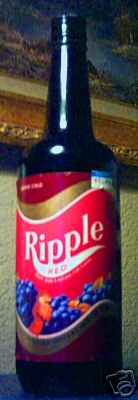Book Review: 'A Feast Unknown' by Philip Jose Farmer
1980, Playboy Press, illustration by Jordi Penalva
1969, Essex House
1975, Quartet Books (UK), illustration by Patrick Woodroffe
excerpt from Mythopoeikon, 1976
1975 (hardcover, limited edition) Fokker D-LXIX Press,illustration by Richard Corben
1988, Grafton (UK), illustration by Peter Elson
5 / 5 Stars
Before Essex House went out of business, it released Farmer’s ‘Image of the Beast’ in 1968, and its sequel ‘Blown’, and ‘A Feast Unknown’, in 1969.
[The concept behind Essex House books may seem quaint by today’s standards, but remember that back in 1969, there was no world wide web, and 'sleaze' fiction was an integral part of the porn landscape. ]
Essex House paperbacks sell nowadays for large sums of money (i.e., > $50) for copies in very good condition.
In the early 80s, Playboy Press obtained the reprint rights to Farmer’s Essex House titles, and issued ‘A Feast Unknown’ in January 1980, and a combined edition of ‘Image of the Beast’ and ‘Blown’ in June 1981. All are mass-market paperbacks.
‘A Feast Unknown’ (288 pp.) features a cover illustration by Jordi Penalva.
The novel can best be described as a sort of ultimate (if extremely warped) homage to Doc Savage and Tarzan, by their greatest Fanboy, Philip Jose Farmer. Think of a piece of slash lit / fanfic, albeit one published in 1969 (back before those terms even existed) and you have some idea of the attitude Farmer brought to this book.
‘Feast’ is a first-person narrative by ‘Lord Grandrith’ (Tarzan), and is set in Africa in the late 60s. Within the first few pages, there are acts of explicit mayhem and depravity committed by Grandrith, just the start of a steady stream of such episodes that last until the very end of the book.
The plot revolves around Grandrith’s quest to re-contact a secret cabal of otherworldly beings, the Nine, who have endowed a certain number of Earth’s inhabitants with a cessation of aging, the ability to heal rapidly from grievous wounds, and superhuman physical and mental capabilities.
However, as Grandrith makes his way to the meeting place, where he will again be questioned by the Nine, and again drink the elixir that maintains his youthfulness, he is aware that the price demanded by the Nine is exquisitely….. painful.
En route, Grandrith encounters homicidal Kenyan rebels, Balkan mercenaries, and not least, Doc Savage, here referred to as ‘Doc Caliban’. It turns out Caliban is not only Grandrith’s half-brother, but he also is one of those endowed by the Nine, and he also journeys to the rendezvous site for a shot of elixir.
But Caliban believes that Grandith has tortured and killed his cousin, Patricia Savage, and thus, the two greatest supermen of modern pulp / pop literature are destined to have a brutally violent showdown.
Hand-to-hand, with no Marquis of Queensbury Rules……..
‘A Feast Unknown’ is one of Farmer’s better novels, a consistently engaging read from its first to its last page. Thematically, it deals with the issue of how supermen might ‘really’ behave, when given the liberty to pursue their own desires without being under the moral restraints of Judeo-Christian ethics.
‘Feast’ does contain plenty of XXX material, and it’s not for the squeamish. However, its myriad atrocities and perversions are related in a deadpan, even droll manner, which gives ‘Feast’ more the character of a dark comedy than a work of pornography. More than once, I laughed out loud while reading some of the more outrageous events taking place in ‘Feast’.
Perhaps because he had so much fun with ‘Feast’, in 1970 Farmer reunited the characters in the Ace Double ‘The Lord of the Trees’ and ‘The Mad Goblin’. The volume was ‘coincidentally’ re-released by Ace in 1980.
Perhaps realizing that he had gone as far into Excess as he could have in ‘Feast’, Farmer wrote ‘Trees’ and ‘Goblin’ as G-rated novelettes.
Accordingly, while competent in their own way, both works seem bland and unremarkable compared to ‘Feast’.














































































